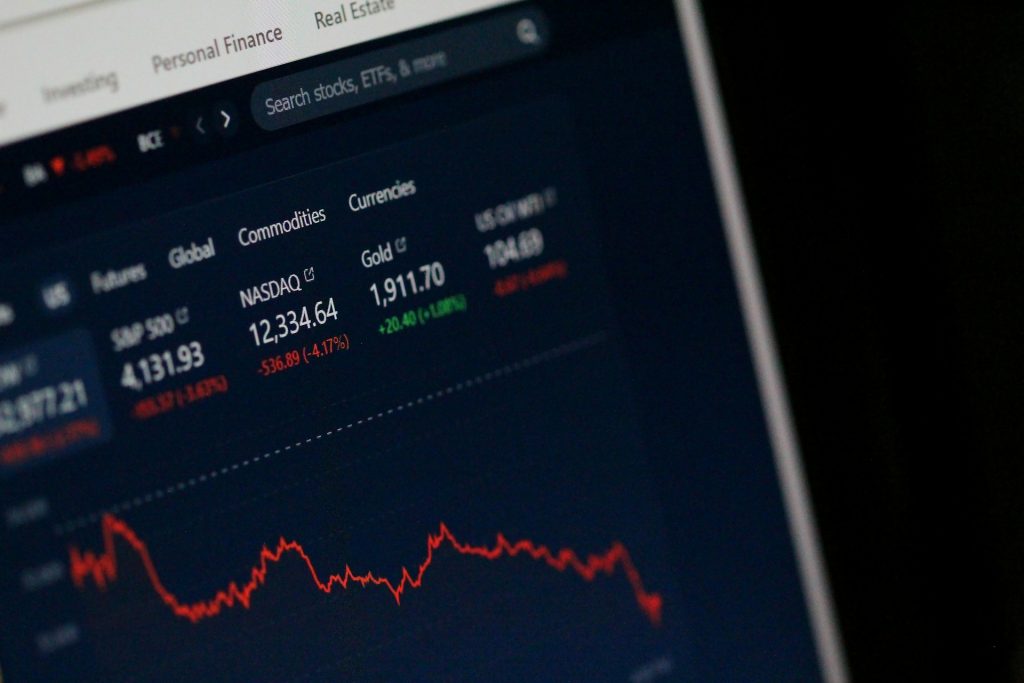
One of the very basic concepts of personal finance is to create an emergency fund. An emergency fund acts as a safety net in case something unexpected should happen: for example a job loss, or a medical emergency. We come across this concept of safety net in many walks of life. All forms of insurance, life, auto and health is a safety net. A margin of safety is a similar safety net, popularized by Benjamin Graham, to provide a cushion in your investments.
In this article we will explore the margin of safety concept as a mathematical calculation and also consider how this approach has evolved over time.
What is the Margin of Safety?
Margin of safety is the difference between a stock’s intrinsic value and its current market price. If the current market price is below the stock’s intrinsic value, the difference is called the margin of safety. The idea is that the lower the stock price is below the intrinsic value, the safer it is to purchase the stock since further downside is limited. The market will not suffer a large undervaluation for long.
If the stock price is above the intrinsic value, the stock does not possess a margin of safety. This stock is considered overvalued.
This is similar to buying something at a discount. For example, if you are offered an automobile at below its Kelly blue book value, you would consider that as a great deal, since you are guaranteed to make back at least your investment amount. You still have a risk of finding new problems with the vehicle that were not disclosed or not present when you made the transaction, but because you paid less than the market value, you have a safety net to cover unexpected expenses.
Similarly for investing, margin of safety protects you against errors in judgment, incorrect assumptions, unexpected market downturns and external shocks.
There are many ways to calculate intrinsic value. Ben Graham advocated the use of Graham Number, which is calculated as Square Root(22.5 x BVPS x EPS). If the market price is lower than the Graham Number, then the stock is considered undervalued. The Graham Number is a proxy for the intrinsic value.
Why 22.5? Because Graham advocated a P/E ratio check of 15 or below and a P/B ratio check of 1.5 or below. Graham Number takes a composite view of these two metrics.
Another way of looking at this is to check if the actual P/E ratio x actual P/B ratio is below 22.5. If yes, than the stock is undervalued.
The difference between the stock price and the Graham Number is the margin of safety (in $s). To calculate the margin of safety in % terms, just divide this by Graham Number (or the intrinsic value) and multiply the result by 100.
Let’s take an example. Say a company has an EPS of $4 and BVPS of $25. The Graham Number or the intrinsic value in this case would be sqrt(22.5 x 4 x 25) = sqrt(2250) = $47.43.
If the stock market price is $40, there exists a margin of safety of $47.43 – $40 = $7.43 or $7.43/$47.43 = 15.67%
You may have your own way of calculating the intrinsic value. Perhaps it is Discounted Cash Flow. Or maybe a different set of multiples. Either way, the calculation of the margin of safety concept stays the same.
The Philosophical Roots of Margin of Safety
Benjamin Graham, having been through the Great Depression, developed the margin of safety concept as a way to protect against unknown risks and market volatility. I personally consider the intrinsic value as the fair value I expect the stock to reach, and therefore the margin of safety is the indicator of the gain I expect in this particular investment. Of course, the higher the better. Margin of safety is also a gentle reminder to yourself that your analysis is not perfect and that many things that you cannot predict, can happen and will happen. Humans tend to overestimate their skills and often confuse precision with accuracy. Stay humble.
Philosophically, value investors believe in capital preservation first and profit second. Buffett is on the record saying “The first rule of investing is to not lose money. The second rule of investing is to never forget the first rule”. Arguably, once you insure the stock against decline, the gains will take care of itself. It is a admonition to the dear investor to consider risk management as the first and foremost duty.
Warren Buffett’s Take: Evolving the Margin of Safety
Buffett moved away from Graham’s “cigar-butt” investing style (value lies in the discounted price) to investing in high-quality businesses. The goal for him is to buy excellent companies at fair prices. These companies are excellent because they possess some kind of defensible competitive advantage – this competitive advantage in itself provides a margin of safety.
For example, his investment in Coca Cola was predicated on the long-term lock in the soft drink market due to Coca Cola’s incredibly strong brand.
With this type of margin of safety available to him, suddenly Buffett was free to buy quality companies at fair prices. This implied that the stock may be trading at the intrinsic value or even a bit above the intrinsic value. The moat and the pricing power will eventually raise the intrinsic value and the market price above these levels and thereby returning a profit to the investor.
This may seem like a small change in the perspective, but it opens up a lot more new investment opportunities. While it was relatively easy to find stocks selling at significant discount to their intrinsic values during Graham’s time, this became progressively more difficult over time as more and more smart investors started scanning the market for mispriced opportunities.
The Margin of Safety Today: Evolving with Modern Markets
Today the situation is even more complex. With the preponderance of service based and tech companies, some of the traditional valuation metrics such as price to book ratio have lost a bit of relevance. Asset light companies naturally have HIGH price to book ratios, at least by traditional accounting definition. These companies have intangible assets such as intellectual property and employee skills and customer relationships.
As a result, today’s value investors such as you, may want to consider some additional measures when evaluating the margin of safety. For example, definitely consider the business fundamentals, but also consider durability and the competitive advantages of the business as part of the margin of safety.
Many of the businesses today scale and rely on the so-called network effects. For example, Facebook and Uber. Once these companies have the market share, their customers are captive because of the networks they have established on these platforms. Switching costs are very high. This is an additional source of competitive advantage, and therefore adds to the margin of safety. Regulations and monopolistic situations (such as utilities, SpaceX deal with NASA, etc) can add much more to the margin of safety.
In today’s fast growth markets such as tech, being first in a space also makes you more secured against competitive and other destructive forces. For example, OpenAI and Microsoft quickly moved in to establish there claim to the AI space as first movers. They certainly can be dislodged over time, but very likely they will keep innovating to stay one step ahead.
Practical Tips: How to Use the Margin of Safety in Your Investing
For heavy industries and asset rich companies, you can calculate the intrinsic value using techniques such as discounted cash flow (DCF) or taking industry standard multiples of earnings or book value. You may want to create a threshold above which you would consider a stock for purchase. For example, many value investors require a margin of safety of at least 30%. If you get a higher margin of safety, you will buy the stock. If it is lower, you may want to wait until the price comes down further.
For most other stocks, consider adding qualitative factors to your margin of safety estimate. Sometimes ascribing numbers is not possible so you may have to make a call based on your understanding of the company business. You should apply the margin of safety concept to each stock in your portfolio individually.
Margin of Safety as a Lifelong Investing Mindset
Patience and prudence were Graham’s watchwords. This is a whole philosophical approach to investing, value investing in particular. It is not just about calculating numbers.
Insisting on sufficient margin of safety means you will not accept any and all opportunities. You will wait for the right opportunities before you commit your capital. You will not avoid risk completely, but you will be more deliberate about the risk you are willing to accept. You will also accept that your analysis is not perfect. You will miss many details. But you are prepared to take on things as they come and confident that your investments will perform well over time.
Finally, the concept has a spillover effect in other parts of your life. For example, you will be more judicious in your decision making process as it relates to your career and life choices.
Margin of safety is a foundational principle of value investing, built to stand the test of time. While the approach may change over time to keep up with changes in the business environment, the underlying philosophy of protecting against downside risk remains essential. I encourage you to take an extra moment to consider your downside risk protection when you are ready to press the buy button on a new investment. You will also find that this concept saves your skin in many other areas of your life.
Photo by Kelly Sikkema on Unsplash

Shailesh Kumar, MBA is the founder of Astute Investor’s Calculus, where he shares high-conviction small-cap value ideas, stock reports, and investing strategies.
His work has been featured in the New York Times and profiled on Wikipedia. He previously ran Value Stock Guide, one of the earliest value investing platforms online.
Subscribe to the Inner Circle to access premium stock reports and strategy insights.
Featured in:








